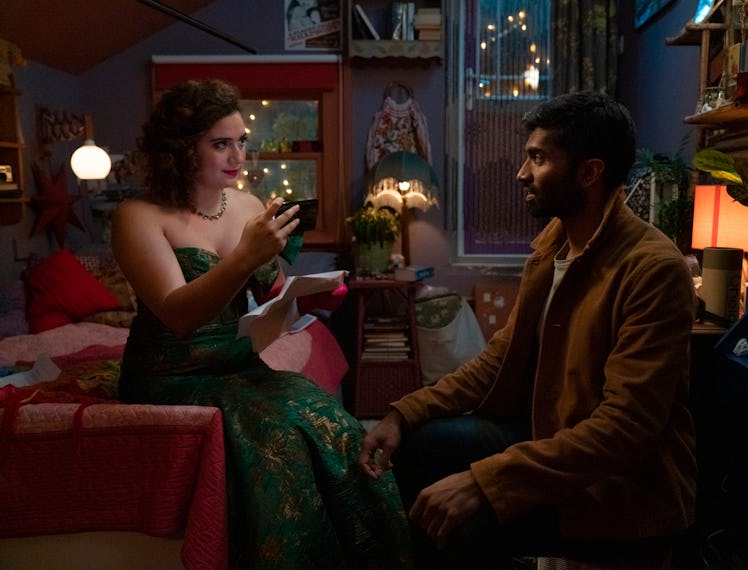Starstruck Is the Cheery Dose of Real-World Romance We Need Now

Welcome to W TV Club, a spin-off series of W Movie Club, in which W magazine’s editors pick a television show they’d recommend you binge-watch. This week, senior digital editor Maxine Wally reviews HBO Max’s British rom-com Starstruck, which turns stereotypical portrayals of heterosexual romance upside-down.
Women in love are typically depicted in films and on television as one of the following: a) desperate spinster/old maid/nag/emotional wreck seeking affection at whatever cost; b) Single! Footloose! Fancy free! Gal about town! Career woman! or c) the proverbial sleeping beauty, glued to her phone, swiping like mad, awaiting a prince. I have never agreed with any of these typecasts, nor do I find they accurately describe the nuances of falling in love or dating—especially not from a woman’s perspective. That’s why I love Starstruck, a laugh-out-loud-hilarious British romantic comedy created by New Zealand native Rose Matafeo.
The series, which debuted on BBC in April this year and is now available for American audiences on HBO Max, tells the story of Jessie (Matafeo)—an awkward, scrappy Millennial living in East London, who accidentally hooks up with a super-hot film star named Tom Kapoor, played by Nikesh Patel. That scenario might be a bit out-there in terms of dating realism, but Matafeo is careful to write each character in Starstruck like a real person. Tom’s nutso agent, played by Minnie Driver, his pesky wannabe influencer costar Sophie, and Jessie’s eccentric roommate Kate—all of whom easily run the risk of becoming caricatures—are so true to life that they remind me of some people I know personally.
A commitment to authenticity extends to Starstruck’s narrative—especially when it comes to Jessie’s and Tom’s relationship. After spending a night together, the two don’t carry on a fairytale love story, nor do they never speak again. They run into each other over the course of a year; each episode in the series is split up by the season in which Tom and Jessie reconnect. This idea of staying in touch, albeit on and off, with a crush feels so truthful, especially in the digital age. Jessie isn’t showing up at Tom’s door wearing a trenchcoat and lingerie, nor is Tom proclaiming his undying love for Jessie while clutching a bouquet of flowers. They simply see each other through a window at a restaurant, or shoot over a text. Maybe they meet up, maybe they don’t. They still like each other, and their lives go on.
But the most groundbreaking part of Starstruck is inarguably its portrayal of gender roles in a straight relationship. Jessie is bigger, both in build and stature, than Tom—skirting the old-fashioned idea that women must be shorter or skinnier than their male partners. In the show, Tom pursues Jessie, rather than Jessie playing the aforementioned desperate emotional wreck, obsessed solely with the idea of winning a man over. And in one scene, while Jesse and Tom are making out on a bed, Tom pauses to request consent, asking, “Is this okay?”
By giving Jessie and Tom lifelike looks, personality traits, emotions, and romantic scenarios, Matafeo has spun the traditional portrayal of stereotypical heterosexual love on its head. Plus, even if you’re not into romantic comedies (which I famously am not), this series holds up from a comedic standpoint. Jessie’s hijinks at a secondhand store, a murder mystery dinner, and while working at a movie theater—all of which have nothing to do with love or dating—are worth the watch alone. Luckily, Starstruck has been picked up for a second season, so the cliffhanger ending of Jessie and Tom’s sweet and endearing love can (perhaps) have resolve. Art should always imitate life—especially when it’s as funny as Starstruck.